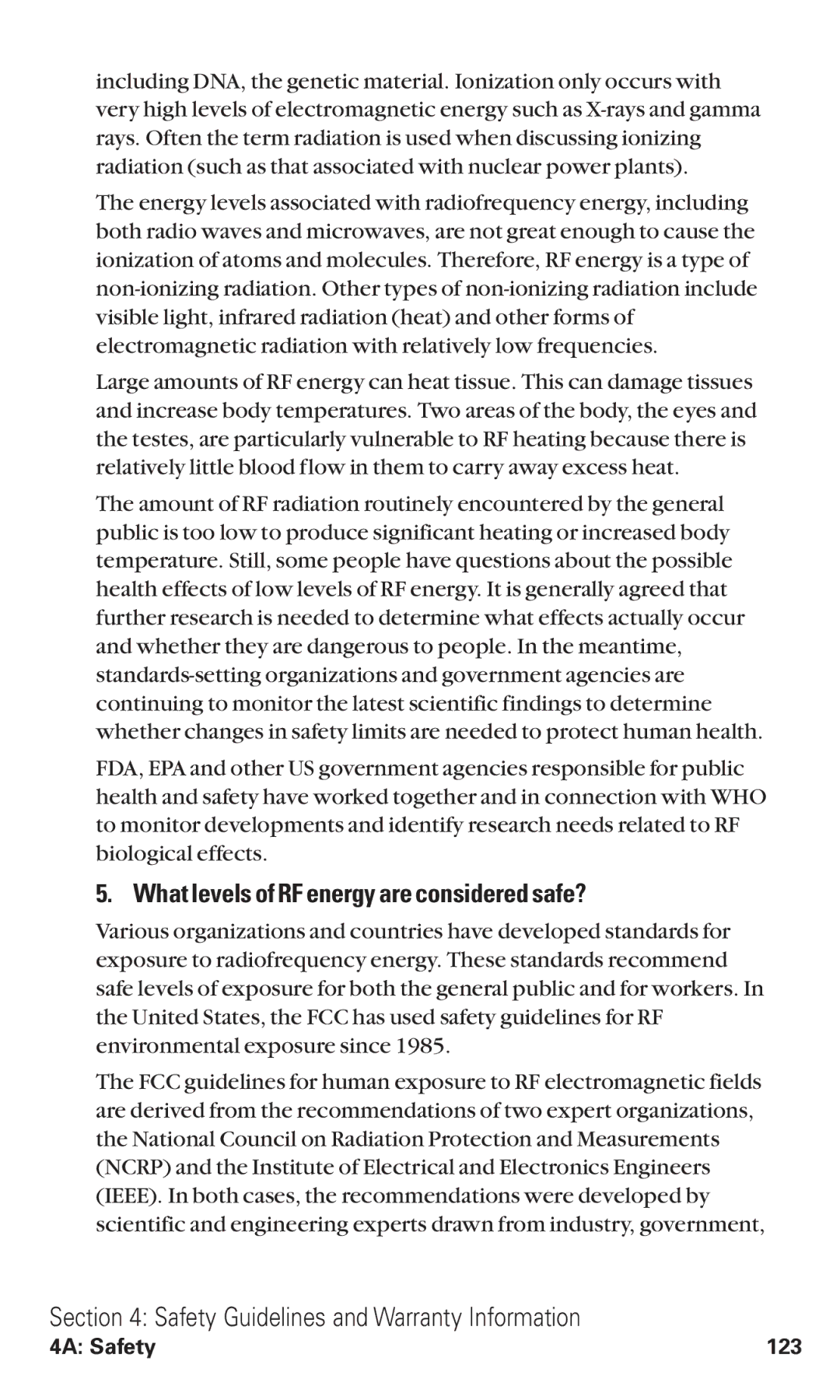including DNA, the genetic material. Ionization only occurs with very high levels of electromagnetic energy such as
The energy levels associated with radiofrequency energy, including both radio waves and microwaves, are not great enough to cause the ionization of atoms and molecules. Therefore, RF energy is a type of
Large amounts of RF energy can heat tissue. This can damage tissues and increase body temperatures. Two areas of the body, the eyes and the testes, are particularly vulnerable to RF heating because there is relatively little blood flow in them to carry away excess heat.
The amount of RF radiation routinely encountered by the general public is too low to produce significant heating or increased body temperature. Still, some people have questions about the possible health effects of low levels of RF energy. It is generally agreed that further research is needed to determine what effects actually occur and whether they are dangerous to people. In the meantime,
FDA, EPA and other US government agencies responsible for public health and safety have worked together and in connection with WHO to monitor developments and identify research needs related to RF biological effects.
5. What levels of RF energy are considered safe?
Various organizations and countries have developed standards for exposure to radiofrequency energy. These standards recommend safe levels of exposure for both the general public and for workers. In the United States, the FCC has used safety guidelines for RF environmental exposure since 1985.
The FCC guidelines for human exposure to RF electromagnetic fields are derived from the recommendations of two expert organizations, the National Council on Radiation Protection and Measurements (NCRP) and the Institute of Electrical and Electronics Engineers (IEEE). In both cases, the recommendations were developed by scientific and engineering experts drawn from industry, government,
Section 4: Safety Guidelines and Warranty Information
4A: Safety | 123 |
